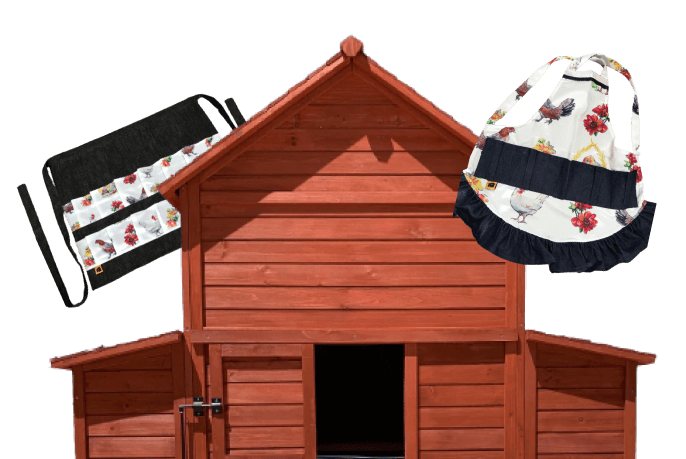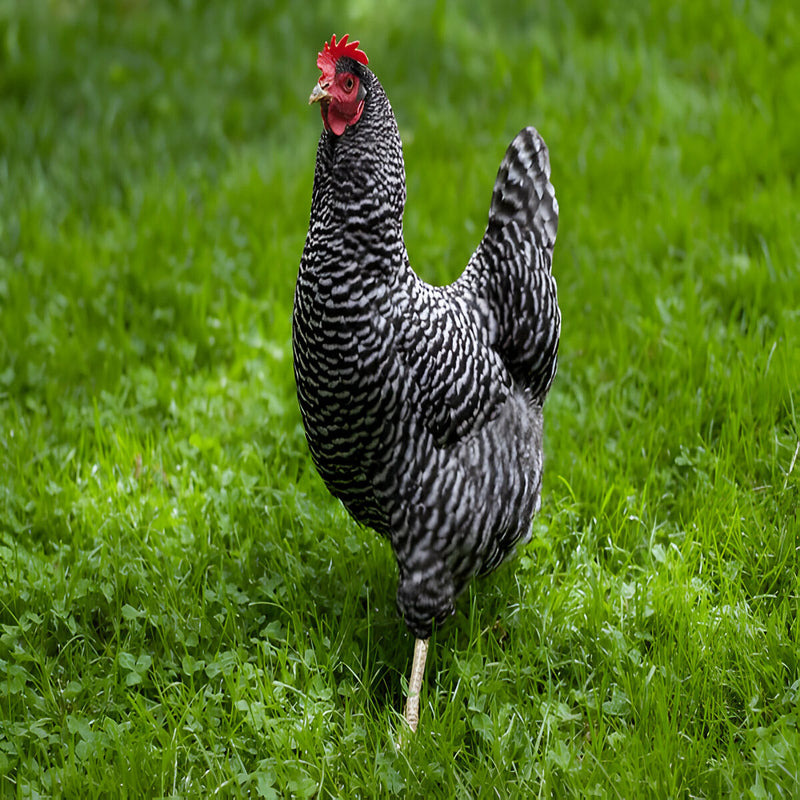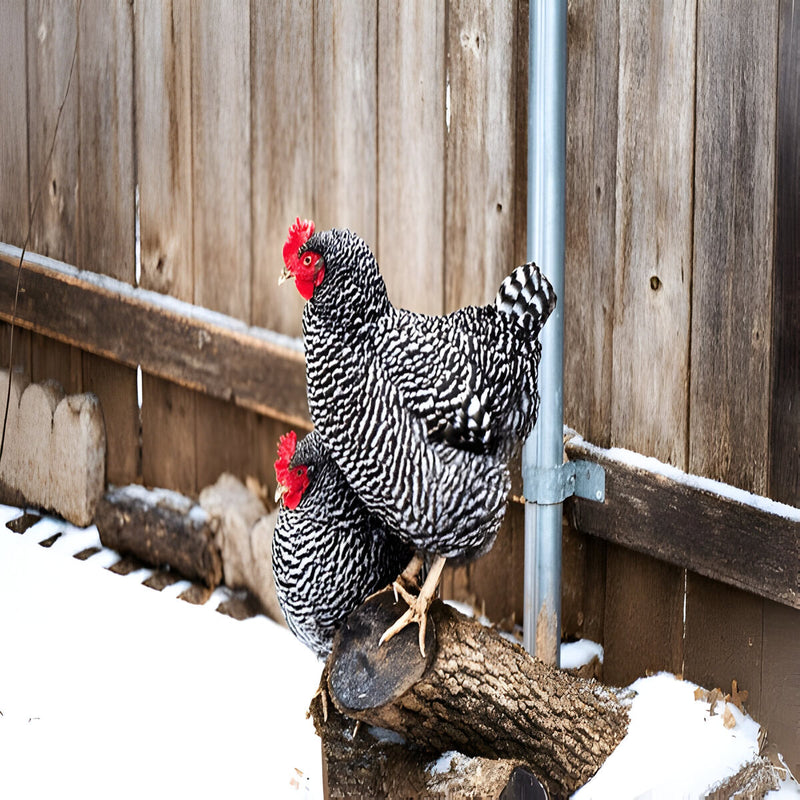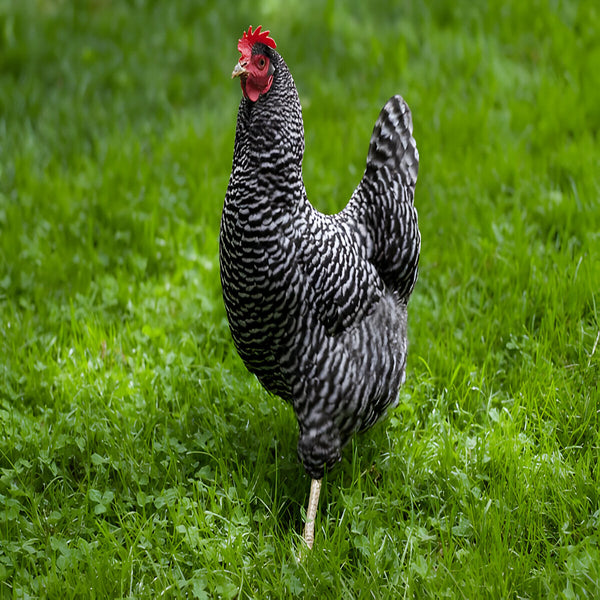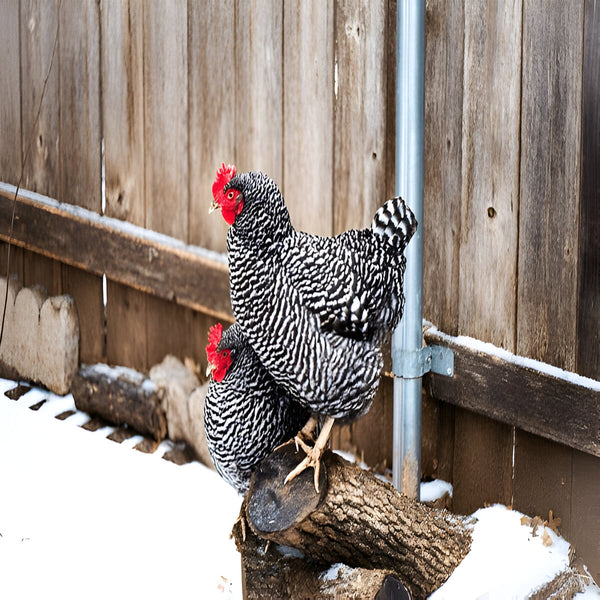-
Size
Large Fowl
-
Egg Color
Brown
-
Egg Size
Large
-
Egg Quantity
Very Good (4/wk)
-
Personality
Friendly
-
Abundance
Common
-
Cold Tolerance
Hardy In Winter
-
Feathered Feet
No
-
Heat Tolerance
Tolerates Heat Well
Barred Plymouth Rock
Barred Plymouth Rock
The Chicken Coop Company is pleased to offer these exhibition-type barred Plymouth Rock chickens. The barred variety is the first Plymouth Rock recognized by the American Poultry Association. This variety first appeared in the Standard of Perfection in 1874. The Standard describes barred Rocks as active and useful dual-purpose fowl.
These exhibition-type Barred Plymouth Rock chickens have a long, broad back and broad, well-rounded breast. The tail is medium length and has no apparent angle with the back. The cock carries its tail at an angle of 30 degrees, the hen at an angle of 20 degrees. The beak, shanks, and toes are yellow. The cock’s plumage is slightly lighter in color than the hen’s. The cock’s comb has five evenly serrated points with middle points longer than those in the front and rear.
Barred Plymouth Rocks are calm and docile, making them perfect to train for exhibition. They are also early feathering, giving them an advantage for early season shows. They are also cold-hardy. The hens lay eggs with shells of various shades of brown, depending on the strain, age, and stage in the production cycle.
If you are seeking an excellent chicken breed for exhibition, look no further. You can place your order. If you wish more information about our exhibition type barred Plymouth Rocks contact us.
Frequently Asked Questions:
Are Barred Plymouth Rocks Friendly?
Barred Plymouth Rocks, often referred to simply as Barred Rocks, are known for their docile and gentle nature. This heritage breed is not only friendly but also quite versatile, producing about 250 brown eggs annually. They are well-suited for various climates, handling both winter chills and summer heat effectively.
What Color Eggs Do Barred Plymouth Rocks Lay?
Barred Plymouth Rocks lay brown eggs, with shades ranging from light to medium brown. The eggs are typically a consistent color without any speckles or spots, giving them a smooth and uniform appearance.
What Is the Difference Between Barred Rock and Plymouth Rock?
Barred Rocks are a specific variety within the Plymouth Rock breed. Plymouth Rocks come in various colors, including white, silver penciled, buff, and black. While Barred Rocks are friendly and their roosters are usually not aggressive, it’s worth noting that roosters do have their roles on the farm.
Do Plymouth Rocks Lay Eggs?
Plymouth Rock hens are prolific layers, averaging about five eggs per week. These eggs are sizable, with a dozen weighing approximately 24 ounces, and have a lovely light brown color. This production rate typically continues for at least three years before gradually declining.
Are Plymouth Rock Chickens Healthy?
Plymouth Rock chickens are known for their hardiness and general good health. They are not particularly prone to specific health issues, making them a robust choice for any poultry enthusiast.
Barred Plymouth Rock Facts
- Poultry Show Class: American Class
- Weights: Hen—–7 1/2 lbs
- Rooster——9 1/2 lbs
- Pullet—6 lbs
- Cockerel—-8 lbs
- Purpose and Type: Exhibition/Show Type; Eggs & Meat
- Egg Shell Color: Brown
- Egg Production: 120-180 eggs per year (estimates only)
- Egg Size: Large
- Temperament: Active
- Gender Accuracy: 85-90%
- Fertility Percentage: 65-80%
- Broody: Setter
- Mating Ratio: 6 Females to 1 Male
- Roost Height: 2 to 4 feet
- Country of Origin: United States
- APA: Yes, Recognized by the American Standard of Perfection in 1874
- TLC: Recovering Status, Considered a sustainable heritage chicken breed
- Breeder Farm Source: Poultry Breeding Farm acquired seed stock from Kraig Shafer in 2020 for our breeding program.
Notice: We do not sell items on Amazon or other websites.
